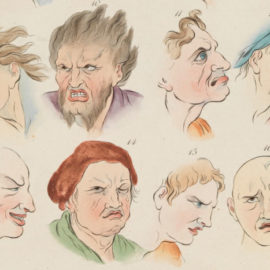

This article is an excerpt from the Shortform book guide to "Influencer" by Joseph Grenny, Kerry Patterson, et al.. Shortform has the world's best summaries and analyses of books you should be reading.
Like this article? Sign up for a free trial here.
What is personal inspiration? How does personal inspiration help adopt a critical practice?
In the book Influencer, the authors claim that adopting critical practices is crucial for making a positive change in your life. The first step is using personal inspiration to persuade yourself and other people that it’s worth it.
Read below for different ways to take advantage of personal inspiration.
Personal Inspiration
There are several reasons why using personal inspiration to adopt critical practices is hard, according to the authors. First, the importance of a critical practice may not be objectively clear to the people you’re trying to influence. Why change a behavior if you don’t see a reason to? Second, the critical practice required to reach a goal may not be immediately rewarding. For example, if the goal is to decrease cholesterol levels, one critical practice is reducing the consumption of fatty foods. Unfortunately, for many of us, fatty foods are immediately satisfying, even if there are long-term consequences. Long-term benefit is harder to sell than immediate satisfaction.
(Shortform note: Psychology and economics professor Dan Ariely points to a third reason why it can be hard to motivate people to change their behavior. In their personal and professional lives, people often have numerous responsibilities that leave them mentally and emotionally drained. Change requires an additional mental load that can further demotivate people to adopt new practices.)
When someone seems unmotivated to change their behavior, the authors caution against judging their lack of inspiration as laziness, selfishness, or apathy. Lack of motivation is rarely an innate flaw. More often it’s the result of a lack of focus on what’s important or lack of awareness about the impact of their behavior. Instead of judgment, the authors advocate for empathy and curiosity.
(Shortform note: This empathetic approach to leadership is similar to a common client-centered therapeutic practice known as “unconditional positive regard.” Unconditional positive regard assumes that every person deserves acceptance and support and has the internal resources necessary for their own healing and growth. It is a non-judgmental approach that honors individuals’ unique perspectives, strengths, and areas of improvement. Leaders can use unconditional positive regard in the workplace to make sure all employees feel valued and supported. Increasing an employee’s sense of belonging will in turn increase their intrinsic motivation to contribute to the collective good of an organization.)
The authors offer several strategies that influencers use to address these challenges and help people see the purpose and value in adopting a critical practice:
First, they recommend avoiding coercion. As an influencer, you must first honor personal agency by not mandating behavior, which could decrease motivation and increase resistance. Instead of dictating behavior, the authors recommend providing the opportunity to opt into the critical practice. Offer the new practice as an invitation rather than a directive. People will more willingly come aboard if they feel they have a choice.
(Shortform note: In psychology, our resistance to being told what to do is called “psychological reactance,” and occurs when something happens that we perceive as a threat to our freedom. People who tend to see themselves as unique and distinct from other people are more likely to perceive demands on them as a threat to their identity, so offering the new practice as an invitation rather than a demand may be even more impactful for these individualists.)
Next, ground the behavior in reality. Help people see the importance of putting critical practices into action by providing experiences and stories, , so that behaviors that might seem unappealing at first glance begin to resonate.
(Shortform note: First-hand experiences and stories are powerful tools because they touch on human emotions. Psychologists and rhetoricians agree that logic alone rarely wins arguments, so influencers must deploy emotions strategically to persuade people to change their behavior. According to research, different emotions can have different impacts depending on the situation. For example, one study showed that shame was more effective than pride in influencing voting behavior.)
People are also more likely to want to adopt critical practices if you make it fun. The authors suggest making the behavior a part of a game or competition, ensuring there are ongoing opportunities for improvement and recognition to sustain motivation. For example, when people compete to get the highest number of steps in a day, they’re more likely to increase their step count.
(Shortform note: Turning a critical practice into a game is an example of gamification, a growing trend in which elements of game design (like competition, levels, rewards, or points) are incorporated into an experience. Gamification has become increasingly popular in large part due to its demonstrated ability to increase participant engagement. Evidence of gamification can be seen from brand marketing strategies to education to productivity apps. However, some studies have shown that the use of gamification strategies in the workplace actually has a negative impact on employee well-being, engagement, and job satisfaction.)

———End of Preview———
Like what you just read? Read the rest of the world's best book summary and analysis of Joseph Grenny, Kerry Patterson, et al.'s "Influencer" at Shortform.
Here's what you'll find in our full Influencer summary:
- A three-step guide on how to influence human behavior
- How to change the minds of those who are unmotivated to change
- How you can use the power of community connection to inspire people





